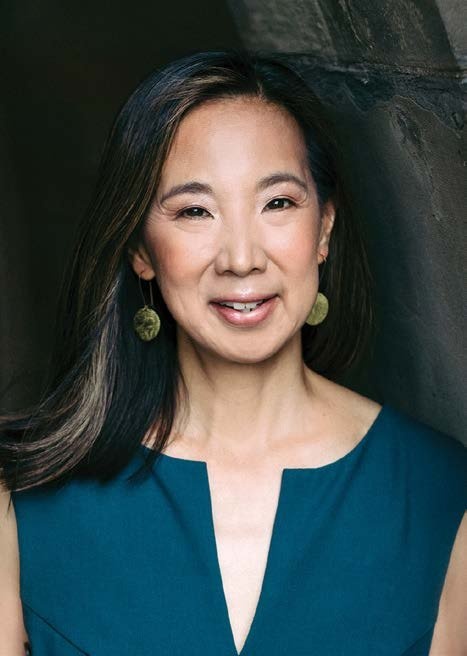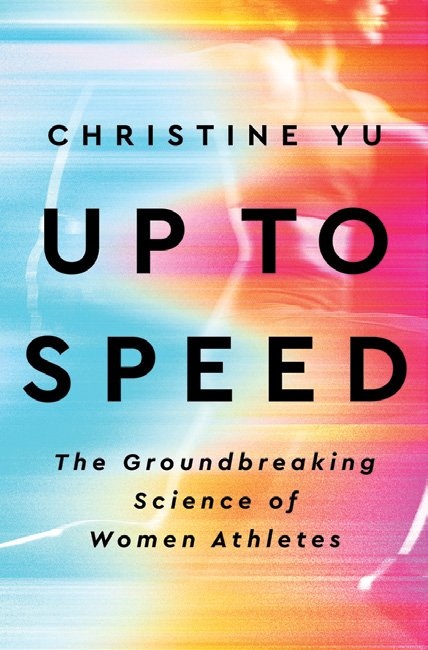Journalist Christine Yu ’99 calls foul on gender bias in sports science
Columbia College | Columbia University in the City of New York
Journalist Christine Yu ’99 calls foul on gender bias in sports science

SYLVIE ROSOKOFF
And yet, gender inequity still runs deep in the fields of biomedicine and exercise science, says Christine Yu ’99 in her new book, Up to Speed: The Groundbreaking Science of Women Athletes (Riverhead Books, $29). Even as they have excelled in sports, there’s an underlying resistance to understanding women’s unique physicality, Yu argues. Despite a dramatic rise in the number of women participating in athletics — 3.4 million girls in the United States compete on high school teams; at the collegiate level, it’s a 600 percent increase from the early 1970s — Yu says that male athletes are privy to vastly more information about their bodies, and the lack of comparable scientific research has had an impact on women’s roles in sports training, performance, rate of injury and long-term health.
“Men’s voices continue to dominate research agendas, funding priorities and resources,” she writes. “Male anatomy, physiology and biology inform standards for athletic development and progression, guidelines for training and nutrition, and blueprints for shoe, clothing and gear design.”
In Up to Speed, Yu explains how gender bias came to be baked into biomedical research and dives into specifics about menstrual cycles, endurance, breast health and gear (the strategy of making men’s apparel smaller and adding a frill or feminine color is known as “shrink it and pink it”). She also looks at the challenges women athletes face during adolescence, pregnancy and postpartum, and menopause.
Yu’s interest stems from her experiences as a lifelong athlete — skiing, surfing and running top the list — and health journalist. After transferring to the College from Stanford, Yu planned to follow in the footsteps of her late father, who had been a neurosurgeon. But that didn’t stop her from majoring in art history. “I felt like having the ability to think in a way that was different from science would be important to me as a doctor,” she says. “And to be in New York and able to visit the artwork we were studying was honestly my favorite thing to do.”
Yu never made it to medical school, but her interest in health care remained. She took a year off to volunteer in a public health program in South America, then worked as a consultant with Ernst & Young before going to the Harvard Kennedy School for a master’s in public policy. She started blogging after she started a family “because I really missed connecting with people through stories and words,” she says. She began freelancing for outlets like Women’s Health, Runner’s World and espnW, and her journalism career took shape.
An aha moment at a 2014 fitness summit led Yu to write her first book. As an athlete, Yu heard of friends who would sometimes lose their periods and assumed that was normal; at the summit, guest speaker Dr. Jennifer Ashton ’91, VPS’00, HN’16 said that was not normal at all. Absent or irregular menstrual cycles can have repercussions for athletic performance, and more importantly, long-term health, especially bone health.
“My mind was blown,” Yu says. “Like, how do we not know this?! The way we think about sports and health is so siloed, and there are all these issues that women are just not educated about. It was a real lightbulb moment for me.
“I think that many of us have had times in which we aren’t heard by doctors, or our experiences are brushed aside,” she continues. “Blind spots in science and medicine and sports exist because these systems weren’t created to accommodate women.”
In Up to Speed’s introduction, excerpted here, Yu becomes frustrated by her doctor’s clueless response after she is waylaid by a torn ACL. “I was embarrassed and ashamed that I was injured ... and I couldn’t stop thinking there was something wrong with my body,” she writes. “That it was written somewhere in my DNA that I wasn’t cut out for certain activities and sports.”
Looking ahead, Yu is hopeful that the gender gap can improve, buoyed by the number of physicians and scientists who came of age during Title IX and are pushing for more research, as well as a new generation of girls and college athletes who are standing up for themselves and demanding better treatment.
“Some of the young girls I’ve talked to are so poised and so incredible — I get goosebumps just thinking about it!” Yu says with a laugh. “They are advocating for change in a way that is really tremendous.”
— Jill C. Shomer

I’m not the only one whose body has had a fraught relationship with sports and exercise. As a journalist, I’ve noticed that even as women have excelled in sports, there’s an underlying sense that women and their bodies are an anomaly in the athletic world. Women athletes are often led to believe that menstrual dysfunction is normal, stress fractures are a rite of passage, knee injuries are inevitable, disordered eating and body image issues are part and parcel of the athletic experience, and athletic careers are limited by puberty, pregnancy and age. When something goes wrong — injury, burnout, overtraining — women are blamed and shamed for it, despite doing everything they’re “supposed” to do. But I couldn’t figure out why the feeling was so pervasive and intractable. Why weren’t we taking better care of girls and women? Did it have to be like this?
The pieces started to click together during the summer of 2018. At the time, I was reporting on an article about the field of sports science and I was trying to understand why so much scientific research leaves out women. The bias against women in biomedical research was something I knew about on a subconscious level, but I admit, I never really thought about it explicitly. As a journalist who covers sports, science, and health, I regularly come across studies that involved men as participants. When I couldn’t find research that included participants who were women, I gave scientists the benefit of the doubt. I assumed the lack of representation wasn’t intentional. There had to be a perfectly reasonable explanation. Maybe women were harder to recruit. Maybe women weren’t interested in participating in studies.
Then I fell down a deep rabbit hole.
As I read more papers and talked to experts, I began to understand that the exclusion of women was more than an oversight. It became clear how, for decades, scientists have worked under the assumption that women and men are biologically and physiologically the same, if you just ignore the reproductive organs. How so much of what we take as gospel about exercise training, nutrition, performance, and injury prevention is based on what’s found in human participants who are men or experiments with male cells or animals. How scientists don’t know for sure whether those recommendations apply to women. How they didn’t see a need to address those data gaps.
But “women are not small men,” as Stacy Sims, an exercise physiologist and nutrition scientist who studies sex, gender, and sports science, told me. Yet that simple proposition underpins the current system of sports and science. And ignoring important biological, anatomical, and physiological differences between women and men can have real, negative implications outside the laboratory.
It’s a curious disconnect. The number of girls and women taking part in physical activity, from fitness classes and recreational leagues to professional sports, has risen dramatically over the last fifty years. In the United States, 3.4 million girls play high school sports. At the collegiate level, the number of women playing sports has increased 600 percent from the early 1970s. This groundswell is a global phenomenon. At the Tokyo Summer Olympics in 2021, women made up nearly 49 percent of the competitors, making them the most gender-equal Games in Olympic history.
But the fields of exercise and sports science haven’t kept pace with this rising population of active women. Even in the twenty-first century, coaches, doctors, trainers, and athletes themselves know the bare minimum about women’s health, and women struggle to find care and advice to help them feel their best. There isn’t much research that looks at the factors that influence athletic performance or the effectiveness of different training and nutrition interventions among women.
There’s another inherent, deeper contradiction embedded in the fabric of science and of sports. In the scientific literature and research laboratories, the features that make a body distinctly female aren’t important enough to warrant additional investigation, but in the world of sports, that viewpoint is flipped on its head. The very characteristics that scientists cast aside as no big deal — the menstrual cycle, hormones, the uterus, ovaries, breasts — are the reason women were marginalized and presumed to be unfit for sports, or at least in need of a segregated competition category. The confluence of these two beliefs has had a huge impact on the athletic lives of women.
From Up to Speed: The Groundbreaking Science of Women Athletes by Christine Yu, published on May 16, 2023, by Riverhead, an imprint of Penguin Publishing Group, a division of Penguin Random House LLC. Copyright © 2023 Christine Yu.

Published three times a year by Columbia College for alumni, students, faculty, parents and friends.
Columbia Alumni Center
622 W. 113th St., MC 4530, 6th Fl.
New York, NY 10025
212-851-7852
cct@columbia.edu

Columbia Alumni Center
622 W. 113th St., MC 4530, 4th Fl.
New York, NY 10025
212-851-7488
ccalumni@columbia.edu